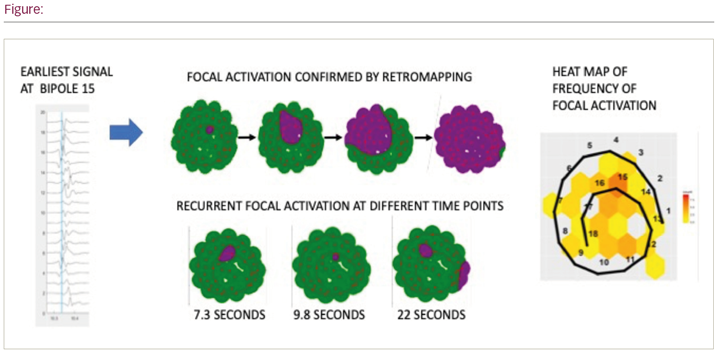Background: Applying conventional approaches of ‘window of interest’ setting and local activation time (LAT) assignment to map atrial fibrillation (AF) is difficult. We overcame this problem using an algorithm to time-shift for best match of adjacent electrograms, using these relative differences in timing to create wavefront activation maps. Understanding AF also requires the interpretation of both temporal and spatial domains. ‘RETRO-map’ was designed to assimilate all these factors.
Objective: The RETRO-map algorithm was used to analyse incidence and frequency of focal activation in persistent AF.
Method: Using atrial bipolar electrograms recorded from a 20-pole double loop catheter across the left atrial endocardium, we validated the algorithm against manual activation mapping in 1373 uniform wavefronts. We then analysed a total of 522 episodes of focal activation from activation maps of 12 recording locations in the left atrium. ‘Heat maps’ of focal activity were created to summarise the frequency of focal activation at each recording location (summarised in Figure).
Results: Focal activation occurred in all recording locations (range 13 to 74 times). Each location demonstrated at least one locus of repeated focal activation. Overall, there were 92 single focal activations, 78 with 2-5 repeats, 39 with 6-9 repeats and 7 with ≥10 repeats.
Conclusion: Focal activation is a common phenomenon in persistent AF. It is not known how to differentiate drivers from passive episcardial-endocardial activation.








